Place under ... antenna
It often happens that the place for an antenna on a digital printed circuit board (PCB) is allotted according to the residual principle - the antenna is rigidly crammed into the remaining free space. Yes, and the antenna is chosen "how it goes," the main thing is to get in. In such a situation, one does not have to talk about any calculations or matching the antenna with the existing circuit. Why is it better not to do this, but to approach the solution of the "antenna" problem more seriously, we will discuss below.
I think it is most interesting to consider the situation described above with a specific example. So, we have a designed printed circuit board of some device that exchanges information over the air in the frequency range 2.4 ... 2.48 GHz. This board is just the case when the antenna was put on the residual principle, because the main task was to minimize the dimensions of the printed circuit board. After manufacturing the prototype PP and their installation, it turned out that the range of the radio channel is much less than the calculated. In this case, there were no problems in the circuitry of the created software. By the method of exclusion, we came to the conclusion that the antenna may be the culprit in this situation.
Due to the small dimensions of the PP (15 mm to 20 mm), it was not possible to put a coaxial microstrip junction (KMPP) on it in order to connect the antenna directly to the measuring equipment. Therefore, it was decided to evaluate the characteristics of the antenna using special CAD systems. Fortunately, we have such an opportunity at the department. So, Figure 1 shows a 3D view of a printed circuit board with layers that affect the antenna characteristics of a printed emitter.
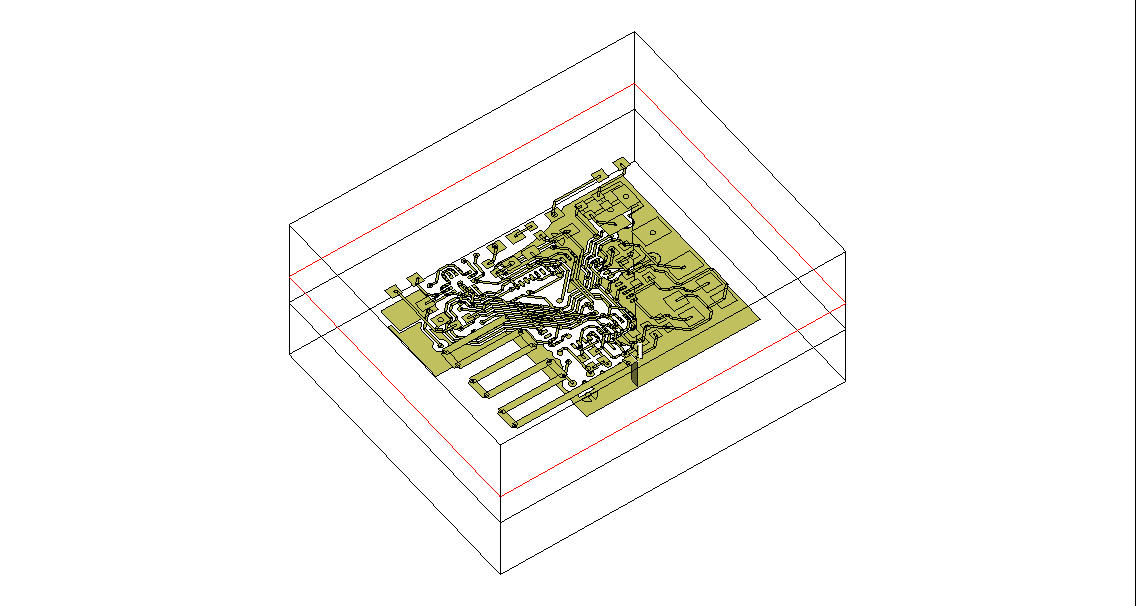
Fig. 1 The number
1 indicates the area of inclusion of the device in the antenna.
And the following figures show the graphs of the antenna characteristics calculated in the simulator. Let's look at a little more detailed characteristics graphs. VSWR
chart(Figure 2) allows you to evaluate the degree of matching of the antenna with the 50-ohm line (which, in fact, leads the signal to the antenna). As can be seen from the graph, the minimum value of VSWR = 85 (but I would like the VSWR to be no more than 2).

Fig.2
What does this mean? This suggests that 95% of all power supplied to the antenna is reflected back into the path. Thus, it can be seen that the mismatched antenna emits, at best, 5% of the input power, which leads to the fact that the range of the radio channel is significantly less than expected. Why it happens?
Figure 3 shows a graph of the total complex resistances , from which it can be seen that the antenna is an inductance and its wave impedance is very far from 50 Ohms.
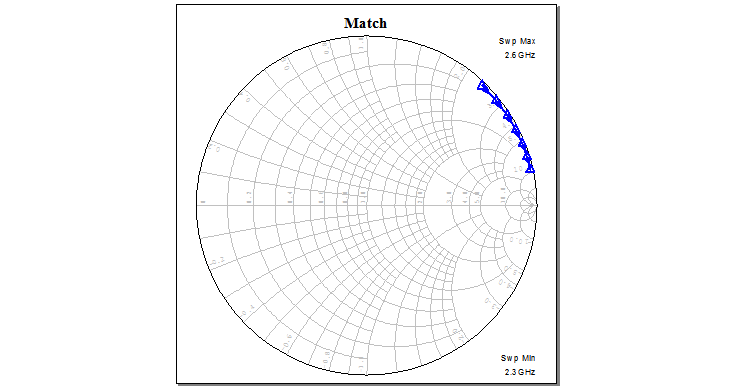
Fig.3
And finally, the radiation pattern (NAM) graphs in elevation (Figure 4) and azimuthal (Figure 5) planes. Exclusively so that later it would be possible to compare different options for the implementation of the antenna.
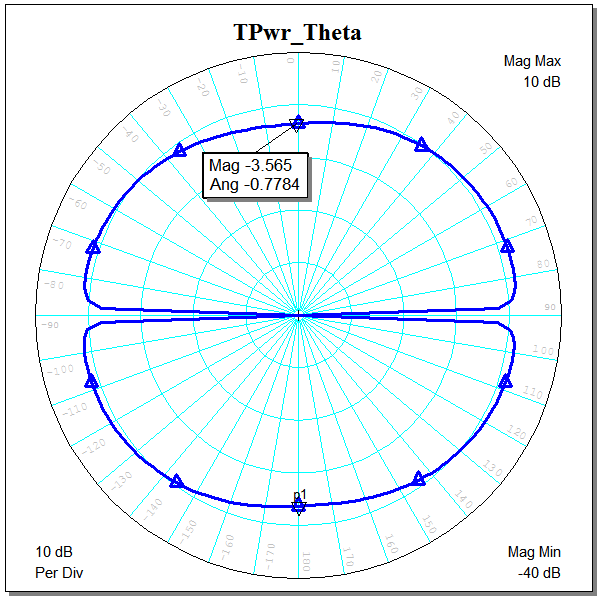
Fig. 4 Fig.

5
Well, the most important question - what to do? In conditions of austerity of space on PP, there are few options. The option was recognized as a worker when the PCB increases by no more than 5 mm on the narrow side (i.e. new board dimensions 20 mm by 20 mm). In such a situation, it was decided to use a printed monopole, as the most compact. Figure 6 shows a modified topology with a new antenna.
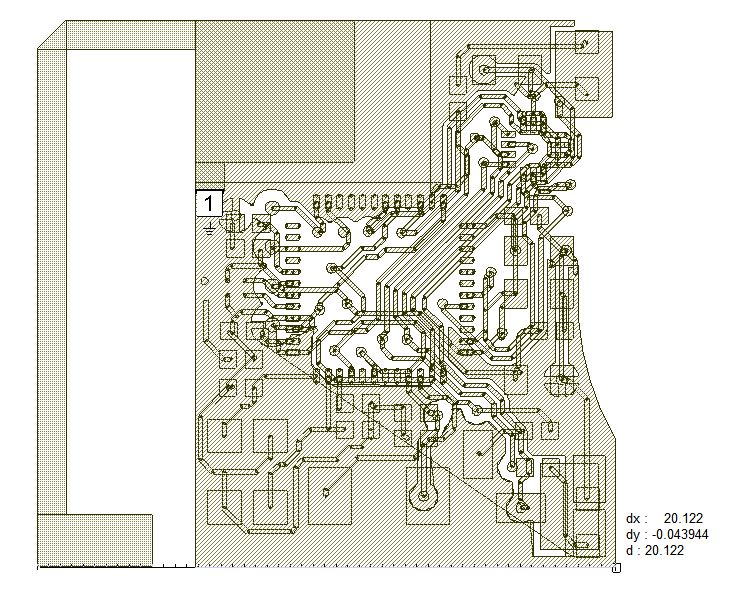
Fig.6
Now everything looks a little better ...
This is how the VSWR looks:

Fig.7
Here is the diagram of complex resistances (the previous option is shown in blue, the new option in pink):

Fig . 8
NAM : Fig .
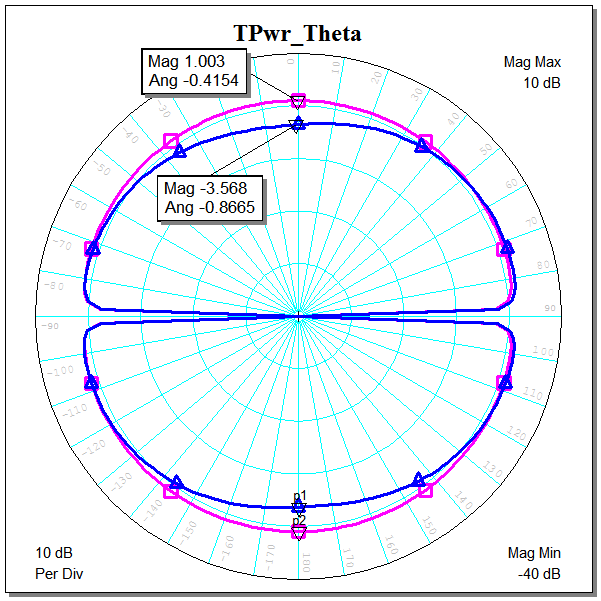
9 NAM in the elevation plane Fig .

10 NAM in the azimuthal plane
As you can see, the new option is much better than the previous one. At the edges of the operating range, the maximum VSWR = 2.7: power loss is about 20%. Of course, this option is a compromise between the dimensions of the printed circuit board and the parameters of the antenna, but it is 100% working.
In addition, the result can be even better if you do not bend the antenna, but straighten it and put it along the edge of the board. For example, do like this (see Figure 11) and in this embodiment, the antenna can be placed along the device’s body.

Fig.11
In this case, the obtained characteristics will be better than the previous version and much better than the original version (for the last version of the antenna, the graphics are brown).

Figure 12.
The graph in Figure 12 shows that the latter option has the best antenna VSWR = 1.25. Those. power losses are less than 1.5%.

Fig.

13 Fig. 14 DN in the elevation plane Fig.
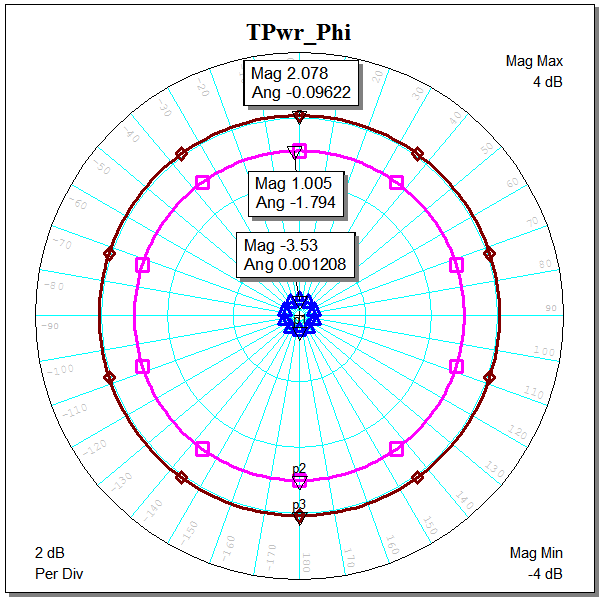
15 DN in the azimuthal plane
What conclusion can be made after all of the above? If the antenna and the influence of the elements of the board on it were thought out initially when designing the software, then it would be possible to save time and money that were spent on a non-working sample.
I think it is most interesting to consider the situation described above with a specific example. So, we have a designed printed circuit board of some device that exchanges information over the air in the frequency range 2.4 ... 2.48 GHz. This board is just the case when the antenna was put on the residual principle, because the main task was to minimize the dimensions of the printed circuit board. After manufacturing the prototype PP and their installation, it turned out that the range of the radio channel is much less than the calculated. In this case, there were no problems in the circuitry of the created software. By the method of exclusion, we came to the conclusion that the antenna may be the culprit in this situation.
Due to the small dimensions of the PP (15 mm to 20 mm), it was not possible to put a coaxial microstrip junction (KMPP) on it in order to connect the antenna directly to the measuring equipment. Therefore, it was decided to evaluate the characteristics of the antenna using special CAD systems. Fortunately, we have such an opportunity at the department. So, Figure 1 shows a 3D view of a printed circuit board with layers that affect the antenna characteristics of a printed emitter.

Fig. 1 The number
1 indicates the area of inclusion of the device in the antenna.
And the following figures show the graphs of the antenna characteristics calculated in the simulator. Let's look at a little more detailed characteristics graphs. VSWR
chart(Figure 2) allows you to evaluate the degree of matching of the antenna with the 50-ohm line (which, in fact, leads the signal to the antenna). As can be seen from the graph, the minimum value of VSWR = 85 (but I would like the VSWR to be no more than 2).

Fig.2
What does this mean? This suggests that 95% of all power supplied to the antenna is reflected back into the path. Thus, it can be seen that the mismatched antenna emits, at best, 5% of the input power, which leads to the fact that the range of the radio channel is significantly less than expected. Why it happens?
Figure 3 shows a graph of the total complex resistances , from which it can be seen that the antenna is an inductance and its wave impedance is very far from 50 Ohms.

Fig.3
And finally, the radiation pattern (NAM) graphs in elevation (Figure 4) and azimuthal (Figure 5) planes. Exclusively so that later it would be possible to compare different options for the implementation of the antenna.

Fig. 4 Fig.

5
Well, the most important question - what to do? In conditions of austerity of space on PP, there are few options. The option was recognized as a worker when the PCB increases by no more than 5 mm on the narrow side (i.e. new board dimensions 20 mm by 20 mm). In such a situation, it was decided to use a printed monopole, as the most compact. Figure 6 shows a modified topology with a new antenna.

Fig.6
Now everything looks a little better ...
This is how the VSWR looks:

Fig.7
Here is the diagram of complex resistances (the previous option is shown in blue, the new option in pink):

Fig . 8
NAM : Fig .

9 NAM in the elevation plane Fig .

10 NAM in the azimuthal plane
As you can see, the new option is much better than the previous one. At the edges of the operating range, the maximum VSWR = 2.7: power loss is about 20%. Of course, this option is a compromise between the dimensions of the printed circuit board and the parameters of the antenna, but it is 100% working.
In addition, the result can be even better if you do not bend the antenna, but straighten it and put it along the edge of the board. For example, do like this (see Figure 11) and in this embodiment, the antenna can be placed along the device’s body.

Fig.11
In this case, the obtained characteristics will be better than the previous version and much better than the original version (for the last version of the antenna, the graphics are brown).

Figure 12.
The graph in Figure 12 shows that the latter option has the best antenna VSWR = 1.25. Those. power losses are less than 1.5%.

Fig.

13 Fig. 14 DN in the elevation plane Fig.

15 DN in the azimuthal plane
What conclusion can be made after all of the above? If the antenna and the influence of the elements of the board on it were thought out initially when designing the software, then it would be possible to save time and money that were spent on a non-working sample.
